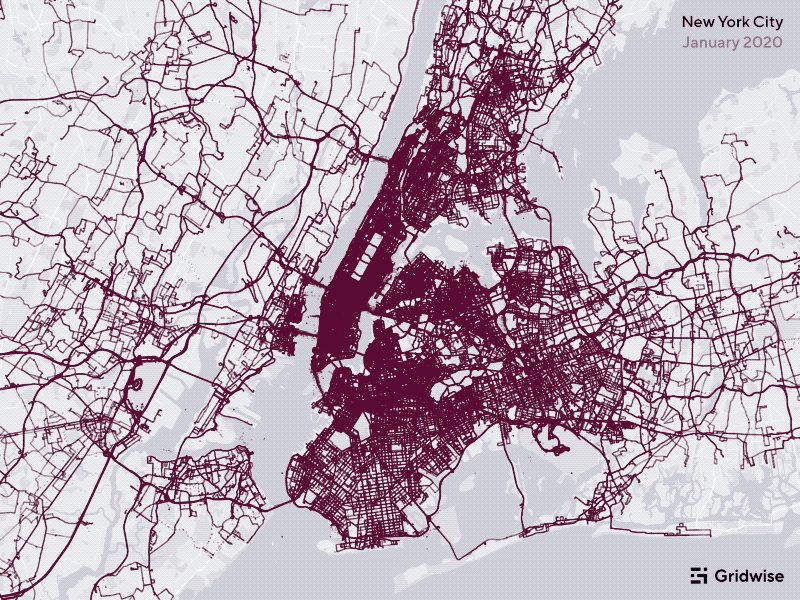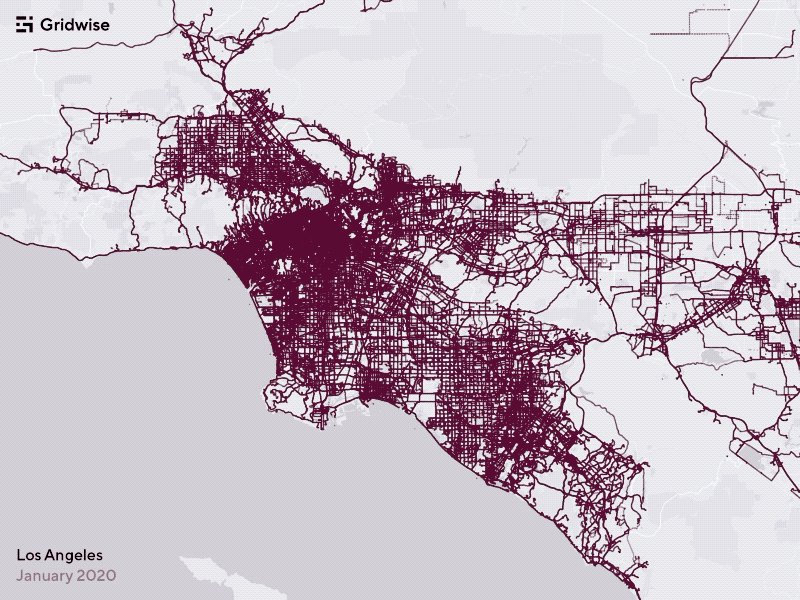COVID-19 has decimated the ride-hailing industry. So how will TNCs respond?
COVID-19, the vicious viral disease caused by the infamous novel coronavirus, has crippled the once flourishing ride-hailing industry.
As most major cities throughout the world implemented lockdowns and shelter-in-place orders to slow the infection rate of the virus, they also brought movement in cities to a near standstill — and the demand for ride-hailing with it.
On March 19th, 2020, Uber CEO Dara Khosrowshahi told analysts that Uber bookings were down some 60% to 70% in “more recently impacted markets like Seattle.” Khosrowshahi also noted that the company was expecting a rebound to begin in the middle of the second quarter, roughly near the end of April.
Things didn’t quite happen according to Dara Khosrowshahi’s plan, however, because as we write this article at the end of April 2020, most citizens are still sheltering in place.
We, of course, can understand this by simply turning on the news and seeing most major cities around the globe extend stay at home orders instead of reducing them, but we can also look to mobility data to tell us a more detailed story about how COVID-19 and stay-at-home orders have affected urban mobility.
How? One of the best ways to measure the amount of movement in a city is by understanding congestion as quantified by driving speed. Less movement in a city means less congestion, which means fewer drivers on the road.
At Gridwise, we can leverage the anonymized data of more than 105,000 ride-hail drivers to understand how people are moving around their city. When we look at the average speed of ride-hail drivers in major urban centers who’ve been hit hard by the COVID-19 pandemic, we’ve noticed a stark increase in speed for those drivers who are still out on the road.
In New York City, for instance, we saw ride-hail speeds increase by 32.29% in April when compared to January, which was a result of drivers just not being on the road.
And New York City isn’t the only city that has seen its streets go barren.
As the coronavirus pandemic tightens its grip on cities around the world, city streets have been transformed overnight. Offices, schools, businesses, and public institutions closed their doors and households buttoned up under stay-at-home and shelter-in-place orders. Roads from NYC to Chicago have become arteries without blood, and the visualizations below make this strikingly clear.

These maps show rideshare activity in New York City and Los Angeles respectively in January and April of 2020.
In the January maps, you can see that rideshare vehicles were covering every corridor of a city as activity was still persisting with strong adoption across all services as it had in previous months.
Not shown on a map (but burned into our memories) is what happened in mid-March. U.S. cities implemented lockdowns and stay-at-home orders, which brought mobility to a near halt.

At this point in time, ride-hail trip volume had plummeted up to 70% in major cities — while at the same time delivery has started to explode in volume, with select services seeing an uptick of 87% in daily revenue.
The persistent activity has resulted from ride-hail vehicles moving essential workers, as well as deliveries.
Significant decrease in ride-hail driver earnings
From the first national broadcast about the rapid spread of COVID-19, companies and workers throughout the United States started feeling the disastrous effects of the crisis, and it’s been especially tough on ride-hail drivers.
The graph below shows the volatility of median hourly wages for U.S. ride-hail drivers.
We can see that national driver earnings reached a high of $19.36 per hour on February 24, 2020 before decreasing by more than 35% to an abysmally low $12.35 per hour in mid-March.
The decline in driver earnings isn’t surprising. As demand decreases, driver earnings will inevitably decrease along with it.
So why, then, are we seeing earnings increase? Because the supply of drivers has decreased as well.
We at Gridwise wanted to know more about the supply side of the rideshare industry, so we conducted a study that included more than 2,000 of our drivers. We found that 46% of drivers stopped driving for rideshare services completely because they felt it was unsafe to keep driving with a deadly virus on the loose. When asked separately if they started driving for a delivery service, 49% said they were driving for services like DoorDash, Postmates, or Instacart.
Los Angeles is a great example of a city whose hourly earnings initially declined and then rebounded weeks after a lockdown went into effect. You can see this on the graph below. Take a look at how earnings plummeted from March 9 to March 16, and dropped even further on March 23. Then by the next week, earnings had jumped from a low of $11.79 back to $15.50.
Why? Because these earnings graphs only include the hourly earnings of drivers still on the road. Not those who have chosen not to drive.
What will happen when stay-at-home orders end?
First, let’s talk about what won’t happen. As soon as these orders are lifted, we’ll all breathe a sigh of relief — but the reality is, ride-hailing demand won’t immediately go back to pre-COVID-19 levels.
At Gridwise we conducted another study (we do that a lot). This time we surveyed 800 consumers because we wanted to better understand consumer perspectives on mobility in 2020. Our study revealed that riders plan to take an average of 25% fewer rides to work using ride-hailing services, and about 17% fewer rides with ride-hailing services for recreational purposes.
This actually makes perfect sense. Even as stay-at-home orders are lifted, most people will still be extra cautious when venturing outside.
Our study confirmed that too. Nearly half of the respondents told us that as long as COVID-19 is still a threat in 2020, they plan to go out 75% less often than they normally would, and more than one-third plan to reduce going out by anywhere from 25% to 50%.
Also not surprising is what people say about using public transportation — which in many ways will be hit even harder than ride-hail. We found that riders plan to use public transportation 23% less often to get to work and 31% less often for recreational purposes than they did before COVID-19.
Based on these insights, we expect to see frequent public transit users flock more toward ride-hailing services for their primary mode of transportation in an effort to steer clear of crowded areas.
So how can TNCs not only survive, but thrive?
By embracing delivery, of course. You already see this happening across the ride-hailing industry.
Lyft, for instance, previously had no delivery business, and in April 2020 launched a service aimed to deliver meals and groceries to essential workers.
Uber has not only doubled down on an Uber Eats business that was already larger than Grubhub, but they have also expanded their offerings. Uber now offers Uber Direct, which expands its services to include grocery and retail delivery services, and Uber Connect, which is a peer-to-peer delivery service.
You even have Alto, a Dallas-based ride-hailing service that has completely pivoted to the delivery market.
While these changes may feel abrupt, the data show that focusing on delivery is the right thing to do not only in the short term, but the medium term as well.
Our consumer sentiment analysis also shows that since the COVID-19 crisis hit, food delivery consumers have been ordering out about 16% more often than they did before the crisis. They also told us they expect to continue ordering out at about that same rate throughout 2020 as stay-at-home orders subside, but COVID-19 remains a persistent, everyday issue.
Even more interesting is the fact that customers are ordering groceries a whopping 62% more than they previously did. This will probably drop slightly after stay-at-home orders are lifted. But there will still be a huge increase in grocery deliveries compared to pre-COVID times as consumers say they will still order delivery 55% more often than they did before.
So which TNCs will win?
Using proprietary data, we have concluded that companies well equipped to focus on food, grocery, and retail product delivery are well-positioned for growth through 2020 and beyond. Uber is well-positioned in the food delivery space to continue to grow while competing with food delivery companies such as Postmates, DoorDash, Grubhub, and others.
Although late to the game, services like Lyft and Alto have started delivery segments of their business as they realize that operating a delivery segment is key for today’s survival and future growth.
Drivers who focus on delivery will also benefit throughout 2020. The graph below shows that while ride-hail drivers have unfortunately been making less through April 2020, delivery drivers are earning more each week.
But is the ride-hailing industry in trouble?
Reports of the death of the ride-hailing industry have been greatly exaggerated.
Despite COVID-19, the ride-hailing industry does appear to be well-primed for medium- and long-term success.
Uber and Lyft have around $13 billion in cash on hand and the ability to raise more funds if needed, which gives both companies plenty of runway to weather the COVID-19 storm.
But even more importantly, ride-hailing is well-positioned against public transportation when it comes to winning back recreational travelers within urban environments.
Our consumer analysis study also found that while consumers plan to use ride-hail services 17% less for recreational purposes throughout 2020 when compared to a pre-COVID-19 world, consumers also say they will use public transportation 31% less.
These data confirm the obvious: that consumers will shy away from public transportation and move toward ride-hail services when they do go out.
And you can expect ride-hail companies to lean into this by building their images around being the sanitized travel option for consumers.
Uber and Lyft also have room to decrease prices, as they have been slowly but surely increasing their prices since the beginning of 2019 as competition decreased. Unfortunately, drivers on the supply side may see their rates cut so these companies can remain profitable. But with TNCs and delivery companies receiving record numbers of driver applications, this may prove to be a non-issue.
So in the short-term, the major ride-hailing companies will certainly take a hit to their revenue — but with a $13 billion war chest between them, don’t expect them to go away anytime soon. In the short-term, they’ll focus on delivery, while picking up riders that would have otherwise taken public transportation throughout the rest of 2020. This will prime them for a strong 2021.



